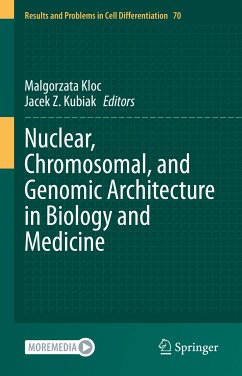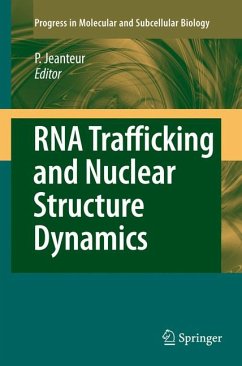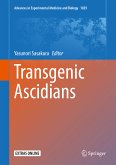The architecture of the cell nucleus and non-random arrangement of chromosomes, genes, and the non-membranous nuclear bodies in the three-dimensional (3D) space alters in response to the environmental, mechanical, chemical, and temporal cues. The changes in the nuclear, chromosomal, or genomic compaction and configuration modify the gene expression program and induce or inhibit epigenetic modifications. The intrinsically programmed rearrangements of the nuclear architecture are necessary for cell differentiation, the establishment of cell fate during development and maturation of tissues and organs including the immune, muscle, and nervous systems.
The non-programmed changes in the nuclear architecture can lead to fragmentation of the nucleus and instability ofthe genome and thus cause cancer. Microbial and viral infections can lead to a clustering of centromeres, telomeres and ribosomal DNA and alter the properties of the nuclear membrane, allowing large immobile macromolecules to enter the nucleus.
Recent advances in next-generation sequencing technologies combined with nucleus/chromosome conformation capture, super-resolution imaging, chromosomal contact maps methods, integrative modeling, and genetic approaches, are uncovering novel features and importance of nuclear, chromosomal and genomic architecture.
This book is an interesting read for cell biologists, researchers studying the structure and function of chromosomes, and anyone else who wants to get an overview of the field of nuclear, chromosomal and genomic architecture.
Dieser Download kann aus rechtlichen Gründen nur mit Rechnungsadresse in A, B, BG, CY, CZ, D, DK, EW, E, FIN, F, GR, HR, H, IRL, I, LT, L, LR, M, NL, PL, P, R, S, SLO, SK ausgeliefert werden.









